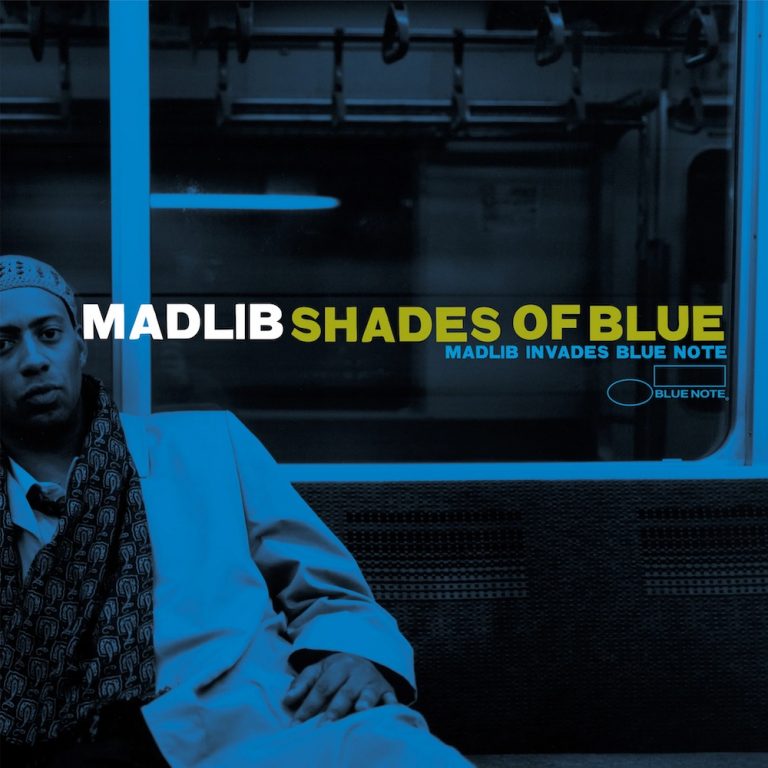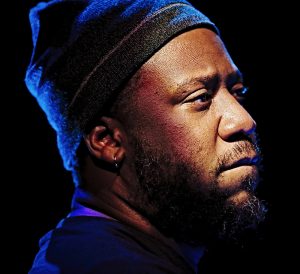The convergence of hip-hop and jazz has long been a topic of discussion. For some, sampling diminishes the artistry and musicianship of the jazz catalogue, extracting drum breaks and groove loops to create an entirely new song. For others, hip-hop is but one of the many offsprings of jazz, marking the long continuum of Black music. Regardless of where you stand on the matter, sampling has had a reciprocal effect, introducing jazz to younger audiences and hip-hop to older ones. Robert Glasper’s “In My Element” (2007) and Madlib’s “Shades of Blue” (2003) are just two examples of this yin-and-yang impact on the genres.
While classically trained, Glasper is a product of the hip-hop generation. His body of work has deeply explored the intrinsic connection between jazz and hip-hop, from his choice of frequent collaborators (Bilal, Ledisi, Lalah Hathaway) to the youthful vibrancy he injects into his playing. Otis Jackson Jr., widely known as Madlib, comes from a vast musical family. His father, Otis Jackson Sr., was a prominent soul singer with an incredible vocal range. Trumpeter Jon Faddis is his uncle. As a producer, he has worked with artists as diverse as Erykah Badu, De La Soul, and Talib Kweli, and released a handful of lo-fi jazz albums under the moniker Yesterday’s New Quintet. Blue Note sensed an opportunity to blend those rich musical roots and in 2003, invited the DJ to reimagine their extensive catalogue in today’s musical lexicon for his first full-length solo effort under the Madlib alias.

For his third solo album release, Glasper furthers the precedent set by Herbie Hancock, who broke new ground in the early 1970s, making synthesizers an integral part of his genre-bending sound. Emerging onto the jazz scene as a leader in the early 2000s, he was arguably a leader of a new generation of jazz voices that defined an era. Much like Hancock, however, Glasper also received his share of flack from certain critics for broadening the canvas of what constitutes jazz.
“In My Element” honours Glasper’s musical influences — jazz pianist Mulgrew Miller (“One for ‘Grew”), hip-hop producer J Dilla (“J Dillalude”), and his mother, jazz and blues singer Kim Yvette-Glasper (“Tribute”). While these people are no longer with us, they live on in Glasper’s fertile imagination as a player and composer. This album marks the early beginnings of what would become Glasper’s signature sound, straddling an amalgam of diverse genres. “G&B” right out the gate is an homage to Ahmad Jamal, from his melodic sensibility to the cyclical chord progressions that, ironically, mimic a loop on a hip-hop record. The perfect introduction for the album and Glasper’s overall sound offers a glimpse of how much hip-hop would serve as a gateway for the pianist.

“Shades of Blue” (subtitle: “Madlib Invades Blue Note”) has become an underrated staple among hip-hop and jazzheads alike. Against a drum backbeat, Madlib injects familiar and lesser-known refrains from over a dozen classic Blue Note tunes. “Distant Land” is instantly recognizable. Donald Byrd’s carefree, relaxed trumpet serves as the melodic line against a steady hip-hop drum loop. Rather than overpowering the trumpet, the drum pattern becomes wondrously intertwined, transporting us all into an unending groove no one wants to end. “Mystic Bounce” also holds tinges of nostalgia, as Ronnie Foster’s indelible bass line has lived (rent-free) in our minds, thanks in part to A Tribe Called Quest’s classic 1993 tune “Electric Relaxation”. On “Mystic Bounce,” Madlib speeds up the pace of the walking bassline, paired with a flurry of soul claps, essentially transforming the tune into a block party anthem or a roller skating jam.
While Glasper updates the jazz tradition by incorporating musical hip-hop influences, Madlib remixes classic jazz recordings by employing hip-hop techniques. Both approaches were fertile, as both albums are testament to the rich cultural connecting lines between the genres. Now how about a Madlib-produced Robert Glasper album?
Robert Glasper’s ”In My Element” and Madlib’s “Shades of Blue” have been reissued in Blue Note’s Classic Vinyl series.

MADLIB Shades Of Blue (Blue Note Classic Vinyl Series)
Available to purchase from our US store.Shannon J. Effinger (Shannon Ali) has been a freelance arts journalist for over a decade. Her writing on all things music regularly appears in The New York Times, Washington Post, Pitchfork, Downbeat, and NPR Music. Shannon lives and works in New York City.
Header image: Robert Glasper, 2017. Photo: Peter Van Breukelen/Getty


